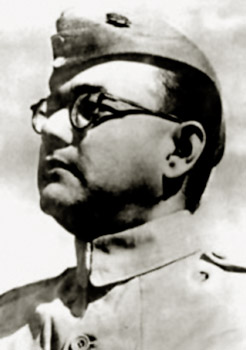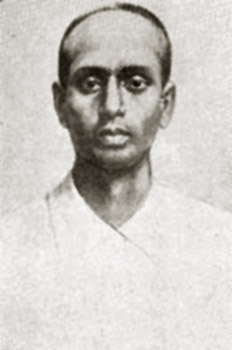 Women during Civil Disobedience Movement in Bengal were very active in their demonstrations and commitment. The women of Kolkata made and sold salt, picketed cloth and liquor shops, preached the value of khaddar, and took processions into the streets. The city, which was a capital under British India, was also the heart of revolutionary struggle and women`s colleges became centres for recruiting new members. In district towns and villages women joined processions, wore khaddar, and hid fleeing revolutionaries.
Women during Civil Disobedience Movement in Bengal were very active in their demonstrations and commitment. The women of Kolkata made and sold salt, picketed cloth and liquor shops, preached the value of khaddar, and took processions into the streets. The city, which was a capital under British India, was also the heart of revolutionary struggle and women`s colleges became centres for recruiting new members. In district towns and villages women joined processions, wore khaddar, and hid fleeing revolutionaries.
Activities of Women`s Organisations duringCivil Disobedience Movement
There were a number of women`s organizations that were mobilizing women during this time. The Mahila Rashtriya Sangha (MRS), begun in 1928, was the first formal organization to mobilize women for political work. Latika Ghosh, an Oxford-educated teacher, founded this organization because Subhas Chandra Bose had asked her to. The MRS had goals similar to the RSS in Mumbai- they wanted to achieve Swaraj and improve women`s status. Kolkata women formed the Nari Satyagraha Samiti (NSS) in 1929 in response to the Congress call for women to be ready to serve the nation. This group had a core of fifteen to twenty women who were willing to picket and risk arrest. They were all Bengali women belonging to the three highest castes: Brahmin, Kayasthas and Vaidyas. They were educated, from professional families, and had all observed some form of the Purdah System. They chose white khaddar saris as their uniform. A number of women took part in the active demonstrations and marches. Middle-class women, rarely seen outside their own homes, astounded the general public when they appeared as Satyagrahis. 22 women were arrested for picketing in July of 1930.
Women`s Revolutionary Organisations during Civil Disobedience
 Movement At the same time as these women were picketing and joining pro cessions, other women were recruited by revolutionary organizations. Whereas previously women had supported revolutionaries by keeping house for them, spreading propaganda, collecting funds, hiding and transporting weapons, and even making explosives, now they were directly involved in revolutionary acts. In some cases women joined the revolutionaries because they wanted action and were shocked by police violence. These include women like Kamala Dasgupta who joined the revolutionary group Jugantar. Most of the women who became involved with revolutionary groups at this time were students, as revolutionary ideals have a natural appeal to the young. However, these young women had very little physical autonomy as they were socialized to behave modestly.
Movement At the same time as these women were picketing and joining pro cessions, other women were recruited by revolutionary organizations. Whereas previously women had supported revolutionaries by keeping house for them, spreading propaganda, collecting funds, hiding and transporting weapons, and even making explosives, now they were directly involved in revolutionary acts. In some cases women joined the revolutionaries because they wanted action and were shocked by police violence. These include women like Kamala Dasgupta who joined the revolutionary group Jugantar. Most of the women who became involved with revolutionary groups at this time were students, as revolutionary ideals have a natural appeal to the young. However, these young women had very little physical autonomy as they were socialized to behave modestly.
The Chattri Sangha was an Association for Female Students formed by Bina Das, her elder sister Kalyani, Surama Mitra and Kamala Dasgupta for the discussion of revolutionary matters. When Mahatma Gandhi called for Civil Disobedience in 1930, Kalyani led the Chattri Sangha girls in a demonstration outside Bethune College. Even when the police ordered these young women to disperse they stood their ground. Finally, the British Commissioner, fed up with police ineptitude, ordered the imprisonment of women leading these demonstrations.
On April 18, 1930, the Indian Republican Army, a revolutionary organization led by Surya Sen, attacked the city of Chittagong. The police successfully counter-attacked within a few hours but this daring strike, as the Intelligence Bureau noted, had an electric effect on young people.
By1933 most of the women revolutionaries were in prison. There had been between sixty and seventy women who had aided the revolutionary groups, and of those approximately forty were imprisoned. They were patriotic young women and their aim had been to arouse the masses to action. Educated, knowledgeable about political issues, they also wanted to prove that women could be as brave as men.
Rural Women in the Civil Disobedience Movement
In the rural districts of Midnapur, 24 Parganas, Khulna, Bakhergunge, Noakhali and Chittagong women responded to the call to break the salt laws. However, police action against the demonstrating women was quite severe. Police violence against demonstrating women in Contai was so severe that Congress called for an enquiry. The findings were serious enough to merit special government instructions to the Bengal police to deal gently with women protesters. The police were particularly vicious in Chittagong where the armoury raid and the proclamation of a Free India by Surya Sen`s group had posed a clear threat. Since village people aided the fleeing revolutionaries, all villagers were regarded as potential enemies.
Thus the participation of women in the Civil Disobedience Movement in Bengal was quite immense.



















